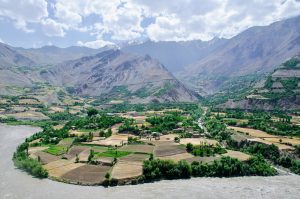On January 28, Kabul received its first snowfall of the winter season, which had started almost two months earlier. The unusually delayed phenomenon nevertheless brought some relief by reducing the capital city’s insufferable level of pollution. In the subsequent two days, major parts of the country received some amount of snowfall and rain. But since then, the weather has played truant. An intense winter chill has persisted, but the snow and rain have disappeared.
Afghanistan is on the verge of facing another bout of climate-induced emergencies. The specter of the country’s third consecutive year of drought-like conditions is no longer in doubt.
During the past two decades, droughts have been sporadic, with their intensity worsening over the years. For instance, the drought in 2018 directly affected 22 of the 34 provinces and displaced at least 300,000 people internally. The year 2021-22 recorded the worst drought in 30 years, affecting 80 percent of the country. It coincided with the main wheat season harvests in May–July 2021, which are critical months for food security and livestock production. Before its collapse in August 2021, the republican government led by President Ashraf Ghani had officially declared a drought on June 22 and predicted that wheat crops in the country would be reduced by nearly 2 million tonnes and more than 3 million livestock were at risk of death. After its arrival, the Taliban regime failed to document the actual impact of the drought.
In the peak winter period, between October 2023 to mid-January 2024, Afghanistan received only 45 to 60 percent of the average precipitation compared to previous years, well below the 40-year average. The U.N. Office for the Coordination of Humanitarian Affairs (OCHA), on January 23, warned that the unseasonably dry and warm winter could have devastating consequences for Afghanistan. It said that the severe impact could be felt on rain-dependent agriculture, especially the seasonal cash crops, affecting the prospect of pasture recovery. In a country where many are dependent upon subsistence agriculture and raising livestock, such variable and extreme climatic conditions are bound to deteriorate food insecurity and trigger massive population movement.
According to the United Nations, increases in drought-related shocks have been reported in 15 out of Afghanistan’s 34 provinces, with the highest increases reported in Parwan, Kunar, Baghdis, Baghlan, and Samangan compared to 2023. A direct impact of rising temperatures is the suboptimal water and sanitation conditions, which are diminishing with the altered precipitation patterns across the country. For years, residents of Kabul have dug deeper to access groundwater. In other areas of the country, such fast-depleting water columns directly affect agriculture, the raising of livestock, and the lives of people. El Niño conditions, which bring in some amount of rain, may offer some opportunities for drought recovery. But these also pose the risk of flooding and pests that affect crops.
Worse still, there is little prospect of respite from this punishing phenomenon. According to the Afghanistan Drought Risk Management Strategy (2019-2030) of the U.N’s Food and Agriculture Organization (FAO), by 2030, annual droughts in many parts of the country will likely become the norm. This, combined with other natural hazards such as flooding and earthquakes, will further limit the coping and earning capacity of the population.
The Taliban regime has displayed little understanding of the climate variability problem, although it claims to have rolled out policies related to climate change, such as enforcing limits on emissions from coal-fired heating systems. Otherwise, its policies to deal with climate issues have been mostly extemporaneous, including the occasional provision of small monetary handouts to victims of drought, earthquake, and floods.
In 2023, the OCHA claimed that the number of people facing high food insecurity during the lean season has decreased compared to previous years, mostly due to “extensive, timely and efficient delivery of humanitarian food and agriculture assistance.” However, given the declining contribution from the international community, sustaining that momentum may be a challenge. Consequently, the vast majority of Afghans would remain outside any assistance program. Sustained high food prices, soaring unemployment, and macroeconomic instability in the country could trigger outward flow of the population as climate refugees.
The international community’s current strategy of isolating the Taliban hasn’t helped either. The deliberate attempt to keep Afghanistan away from global discourse on climate change, mostly to extract Taliban compliance on women, girls, and minority rights issues, is a self-limiting strategy that mixes politics with the priorities of the Afghan populace. These concerns over Taliban policies regarding human and women rights need to be balanced against the on-ground realities and needs of the people in Afghanistan. There should be greater engagement between the donor agencies and the U.N. with the Taliban regime especially on a pressing issue like climate change.
More importantly, helping Afghans deal with climate-induced emergencies could aid in addressing the drivers of unending conflict and instability in the long-term.

































